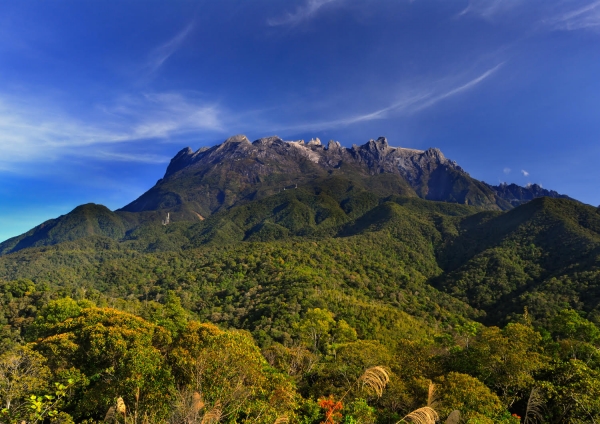Evolution peaks on tropical mountain

Tropical mountains have an exceptionally high biodiversity. This is also the case for Mount Kinabalu in Sabah, Malaysian Borneo. During an expedition, organized by Naturalis Biodiversity Center and Sabah Parks, experts investigated the local fauna, flora, and fungi. They discovered that most of the unique species that occur in the area had evolved later than the age of the mountain itself, and that some had evolved from immigrant ancestors, whereas others evolved from local ancestors. These findings are published in Nature.
On tropical mountains, exceptional numbers of species occur. This is because temperature and environment change rapidly as elevation increases. Therefore the species living on the summit of a mountain often only occur there. These are sometimes referred to as endemic species. Mount Kinabalu in Sabah, Malaysian Borneo is an example of that. The 4,095 meter high mountain is on the world Heritage list of UNESCO and is home to hundreds of unique species.
Together with 45 other experts, Naturalis researchers Vincent Merckx and Menno Schilthuizen collected dozens of such endemic species in 2012 during a Dutch-Malaysian scientific expedition on Mount Kinabalu. They then used DNA to determine from which species these endemic species had evolved. The researchers showed that most of the species that occur on the mountain are younger than the mountain itself. They also demonstrated that the endemic biodiversity consists of two groups. Some of the unique species are immigrants from far away areas such as the Himalayas or China, which were already adapted to a cool environment. The other endemic species evolved from the local species that occurred at the foot of the mountain and which gradually adapted to the cooler conditions.
In a period of two weeks, the researchers collected tens of thousands of plants, animals and mushrooms at 37 locations on and around Kinabalu. These included ferns, mosses, orchids, snails, leeches, insects, spiders, and frogs. The results of this study revealed that the mountain is a hotbed for evolution. "It is sometimes thought that tropical mountains are also locations where very old species survive. However, our research reveals that most of the species are young", says Schilthuizen. New species evolve at the top the mountain, but these often evolve from species that already lived under such conditions. "This is important for the protection of the endemic species. Our research reveals the extent to which species are able to evolve to keep up with climate change and this allows us to make predictions for the future."
- Explore further: The global impact of climate change on biodiversity
- More information: Nature, DOI: 10.1038/nature14949

Facebook comments